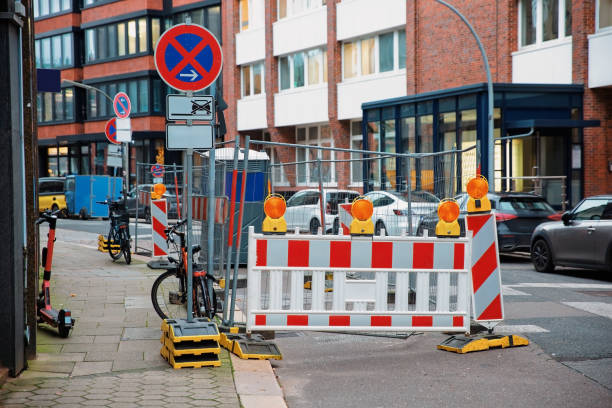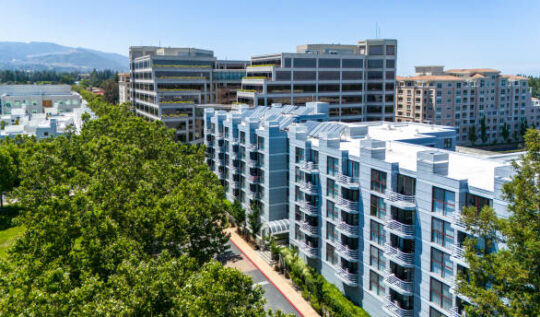AB 2097 Parking Reform: How to Slash Stalls & Costs
What if we told you that one simple rule change could unlock thousands of new homes across California—just by rethinking AB 2097 parking?
In the middle of a historic housing crisis, where the average home costs over $800,000 and rent eats up more than a third of most people’s income, every square foot of land matters. Yet for decades, California cities have forced developers to build parking spaces—even when residents don’t need them and transit is just steps away.
Enter AB 2097, a bold new law that flips the script.
By eliminating minimum parking requirements near major transit stops, this reform gives developers more room (and more budget) to build what people actually need: housing. Whether you’re a builder, planner, policymaker, or just someone tired of sky-high rent, this guide will walk you through how AB 2097 is reshaping California—one parking stall at a time.
Let’s break down the law, the numbers, and what it all means for the future of affordable, walkable, and transit-connected communities.
Table of Contents
ToggleWhat is AB 2097 Parking Reform?
California Assembly Bill 2097 (AB 2097) is a 2022 statute that bans California cities and other public agencies from requiring parking for most development projects within 0.5 miles of a major transit stop. This simple change carries huge implications for housing development across the Golden State.
The law builds on previous California housing laws that aim to boost housing production, similar to how AB 2011 streamlined affordable housing approvals.
💰 Parking Cost Breakdown
Click each type to see construction & maintenance costs.
🚗 Surface Parking
Construction Cost: $5,000–$15,000
Annual Maintenance: $500–$800
🏢 Structured Parking
Construction Cost: $25,000–$50,000
Annual Maintenance: $1,200–$2,000
🏗️ Underground Parking
Construction Cost: $40,000–$75,000
Annual Maintenance: $1,500–$2,500
Key Provisions of the Law
The legislation targets several core areas:
Geographic Scope: Projects within 0.5 miles of major transit stops are exempt from minimum parking requirements. This includes areas near:
- Light rail stations
- Bus rapid transit stops
- Ferry terminals
- High-frequency bus routes
Project Types Covered: The law applies to most development projects, including:
- Residential developments
- Commercial buildings
- Mixed-use projects
- Office complexes
Exceptions: Some projects still require parking analysis, including developments that could create substantial hardship for existing residents.
The Hidden Costs of Parking Requirements
Before diving into AB 2097’s benefits, let’s examine the true cost of parking mandates. Most people don’t realize that parking spaces aren’t free – they’re expensive to build and maintain.
Breaking Down Parking Costs
In the Los Angeles region, each parking space in an apartment building costs about $55,000 to build. These costs get passed on to residents through higher rents and purchase prices, even for people who don’t own cars.
Here’s how parking costs break down:
| Location Type | Cost per Space | Annual Maintenance |
|---|---|---|
| Surface Parking | $5,000-$15,000 | $500-$800 |
| Structured Parking | $25,000-$50,000 | $1,200-$2,000 |
| Underground Parking | $40,000-$75,000 | $1,500-$2,500 |
The Ripple Effect
These parking costs create a domino effect throughout the housing market:
- Higher Construction Costs
Developers must allocate significant portions of their budgets to parking instead of housing units.
- Reduced Housing Supply
Space dedicated to parking could house more families, but minimum requirements prevent this optimization.
- Increased Housing Prices
The cost of parking gets rolled into housing prices, making homes less affordable for everyone.
- Environmental Impact
More parking encourages car ownership and reduces public transit use, contributing to air pollution and traffic congestion.

How AB 2097 Transforms Development
The parking reform law creates opportunities for more efficient land use and affordable housing development. Let’s explore how this transformation works in practice.
Immediate Benefits for Developers
Developers working on projects near transit stops can now:
- Reduce Construction Costs: Eliminating parking requirements can save $25,000-$55,000 per unit
- Increase Unit Density: Space previously reserved for parking can accommodate more housing units
- Faster Project Approval: Simplified parking analysis speeds up the development process
- Greater Design Flexibility: Architects can focus on creating better living spaces instead of parking solutions
Long-term Market Changes
The law’s impact extends beyond individual projects:
- Market-Based Parking
Developers can now provide parking based on actual demand rather than arbitrary minimums. This leads to more efficient parking supply.
- Transit-Oriented Development
The law encourages development near public transportation, creating walkable communities and reducing car dependency.
- Affordable Housing Opportunities
Lower development costs make affordable housing projects more financially viable.
Geographic Impact: Where AB 2097 Applies
Understanding where the law applies is crucial for developers, city planners, and residents. The legislation uses specific definitions to determine eligible areas.
Major Transit Stops Definition
The law defines major transit stops as existing or planned stops on:
- High-quality transit corridors
- Rail transit systems
- Ferry services with parking facilities
- Bus rapid transit systems
Coverage Areas Across California
Los Angeles County: Over 60% of developable land falls within AB 2097 coverage areas, particularly in:
- Downtown Los Angeles
- Hollywood
- Santa Monica
- Long Beach
- Pasadena
The AB 2097 Los Angeles implementation has been especially significant, with the city updating its Transit Oriented Communities guidelines to align with the new law.
San Francisco Bay Area: Most urban areas qualify, including:
- San Francisco (90% coverage)
- Oakland (75% coverage)
- San Jose (65% coverage)
Sacramento: About 40% of the metro area benefits from the law.
San Diego: About 55% of urban areas qualify, especially around trolley lines and major bus routes.
The AB 2097 California implementation varies by region, with some areas seeing faster adoption than others. The law works alongside other state housing initiatives, including the California Affordable Housing Act and Section 21155 of the Public Resources Code, which streamlines environmental review for transit-oriented projects.
Case Studies: AB 2097 in Action
Real-world examples show how the parking reform law creates positive change across different communities. These projects demonstrate the practical benefits of Assembly Bill 2097 in action.
Case Study 1: Los Angeles Mixed-Use Development
A 120-unit mixed-use project in Hollywood benefited significantly from AB 2097:
Before AB 2097:
- Required: 180 parking spaces
- Parking cost: $9.9 million
- Total project cost: $45 million
After AB 2097:
- Provided: 60 parking spaces (based on market demand)
- Parking cost: $3.3 million
- Total project cost: $38.4 million
- Savings: $6.6 million
The developer used the savings to include 20 additional affordable housing units, increasing the project’s community benefit.
Case Study 2: San Francisco Affordable Housing
A 80-unit affordable housing project near a BART station showcased the law’s impact:
Financial Benefits:
- Eliminated requirement for 120 parking spaces
- Saved $4.8 million in construction costs
- Reduced per-unit cost by $60,000
Community Benefits:
- Added 15 additional affordable units
- Created ground-floor retail space
- Improved pedestrian access to transit
Case Study 3: Sacramento Workforce Housing
A 200-unit workforce housing development demonstrated the law’s suburban applications:
Results:
- Reduced parking from 400 to 250 spaces
- Saved $3.75 million in construction costs
- Lowered monthly rents by $200 per unit
Economic Benefits: The Numbers Game
AB 2097’s economic impact extends far beyond individual projects. Let’s examine the broader financial implications and how they compare to other California housing incentives.

Construction Cost Savings
State-wide analysis shows significant savings potential:
Annual Savings Estimates:
- Total eligible projects: 50,000 units per year
- Average savings per unit: $35,000
- Annual state-wide savings: $1.75 billion
Housing Affordability Impact
The law’s affordability benefits are measurable:
Rent Reductions:
- Average monthly rent decrease: $150-$300 per unit
- Annual household savings: $1,800-$3,600
Home Purchase Savings:
- Average home price reduction: $25,000-$50,000
- Expanded homeownership opportunities for moderate-income families
Economic Multiplier Effects
The savings create additional economic benefits:
- Job Creation: Lower development costs enable more housing projects
- Local Business Growth: Increased residential density supports neighborhood businesses
- Tax Revenue: More housing units generate additional property tax revenue
Environmental and Social Benefits
AB 2097 delivers benefits beyond cost savings, contributing to environmental sustainability and social equity. The law supports California’s climate goals by reducing vehicle dependency and promoting sustainable transportation.
Environmental Advantages
Reduced Carbon Footprint:
- Less concrete and asphalt construction
- Decreased urban heat island effect
- Reduced stormwater runoff
Transit Usage Promotion:
- Encourages public transportation use
- Reduces per-capita vehicle miles traveled
- Supports California’s climate goals
Social Equity Improvements
Housing Access:
- More affordable units available
- Reduced displacement pressure
- Increased housing choices for low-income residents
Transportation Equity:
- Reduces the burden on households that can’t afford cars
- Improves access to jobs and services via transit
- Creates more walkable communities
Implementation Challenges and Solutions
While AB 2097 offers significant benefits, implementation hasn’t been without challenges. Understanding these obstacles helps stakeholders navigate the transition. Cities and developers are learning to adapt, much like they did with previous housing legislation.
Common Implementation Challenges
Local Government Resistance:
- Some cities worry about parking shortages
- Concerns about increased street parking demand
- Revenue loss from parking fees and permits
Developer Adaptation:
- Learning new market-based parking approaches
- Adjusting to different financing structures
- Managing community concerns about parking
Community Concerns:
- Existing residents worry about parking competition
- Businesses fear customer parking shortages
- Adjustment to changing neighborhood character
Proven Solutions
Gradual Implementation:
- Start with pilot projects to demonstrate success
- Gather data on actual parking demand
- Adjust approaches based on real-world results
Community Engagement:
- Hold public meetings to address concerns
- Provide clear information about benefits
- Involve residents in planning processes
Flexible Approaches:
- Allow developers to provide some parking based on market research
- Implement parking management strategies
- Create shared parking arrangements

Best Practices for Stakeholders
Success with AB 2097 requires thoughtful approaches from all stakeholders. Here are proven strategies for different groups.
For Developers
Market Research: Conduct thorough parking demand studies to determine optimal parking supply.
Community Engagement: Work with neighbors early in the process to address concerns and build support.
Phased Approach: Consider starting with modest parking reductions to test market response.
Alternative Transportation: Provide bike storage, car-sharing spaces, and transit subsidies to reduce parking demand.
For City Planners
Update Zoning Codes: Revise municipal codes to comply with AB 2097 requirements and align with state housing mandates.
Parking Management: Implement residential parking permit programs and time limits to manage street parking.
Transit Improvements: Coordinate with transit agencies to enhance service near new developments.
Monitoring Systems: Track parking utilization and adjust policies based on data.
For Communities
Open Communication: Engage with developers and city officials to voice concerns and suggestions.
Flexible Expectations: Recognize that parking patterns may change as neighborhoods evolve.
Transit Advocacy: Support improved public transportation to reduce parking demand.
Shared Solutions: Explore shared parking arrangements with nearby businesses and institutions.
The Future of Parking Reform
AB 2097 represents just the beginning of California’s parking reform movement. Several trends show where the state is heading, building on the success of this landmark legislation.
Expanding Geographic Coverage
Proposed Legislation: Additional bills aim to expand parking reform to more areas, including:
- Areas within walking distance of frequent bus service
- Neighborhoods with low car ownership rates
- Downtown cores and commercial districts
Technology Integration: Smart parking systems and real-time availability apps make parking more efficient.
Market-Based Approaches
Dynamic Pricing: Some cities experiment with variable parking rates based on demand.
Shared Parking: Technology platforms enable sharing of private parking spaces.
Mobility-as-a-Service: Integrated transportation options reduce the need for private parking.
Regional Coordination
Multi-City Initiatives: Regional planning agencies coordinate parking policies across jurisdictions.
Transit Integration: Parking policies align with regional transit planning.
Data Sharing: Cities share parking utilization data to improve regional planning.
Measuring Success: Key Performance Indicators
Tracking AB 2097’s impact requires comprehensive monitoring systems. Here are the key metrics stakeholders should watch.
Housing Metrics
Development Activity:
- Number of housing units built near transit
- Percentage of affordable units in new developments
- Average time from project approval to completion
Affordability Indicators:
- Median rent levels in AB 2097 areas
- Home sale prices near transit stops
- Housing cost burden for different income groups
Transportation Metrics
Transit Usage:
- Ridership levels on routes serving AB 2097 areas
- Mode share changes in affected neighborhoods
- Vehicle miles traveled per capita
Parking Utilization:
- Street parking occupancy rates
- Private parking demand in new developments
- Parking-related complaints and issues
Environmental Metrics
Land Use Efficiency:
- Density of new developments
- Amount of land converted from parking to housing
- Green space preservation
Environmental Quality:
- Air quality improvements
- Carbon emissions reductions
- Stormwater management benefits
Technology and Innovation
Modern technology plays a crucial role in making AB 2097 successful. Innovation helps optimize parking supply and demand.

Smart Parking Solutions
Dynamic Pricing Systems: Apps that adjust parking rates based on demand help manage limited street parking.
Real-Time Availability: Technology shows available parking spaces, reducing circling and congestion.
Shared Parking Platforms: Apps connect people with unused parking spaces in their area.
Transportation Technology
Mobility Apps: Integrated platforms combine transit, bike-share, and ride-sharing options.
Electric Vehicle Infrastructure: Charging stations reduce the need for traditional parking spaces.
Autonomous Vehicles: Future self-driving cars may reduce overall parking demand.
Financial Planning and Incentives
AB 2097 creates new opportunities for creative financing and incentive programs.
Developer Incentives
Cost Savings Reinvestment: Developers can use parking savings for additional affordable units or community amenities.
Green Building Credits: Reduced parking contributes to sustainable building certifications.
Fast-Track Approvals: Cities may offer expedited permitting for AB 2097 projects.
Public-Private Partnerships
Shared Parking Agreements: Developers partner with businesses to share parking resources.
Transit Improvements: Development impact fees fund transit enhancements instead of parking.
Community Benefits: Parking savings fund public spaces and affordable housing.
Conclusion
AB 2097 isn’t just a tweak to zoning rules—it’s a shift in how we think about land, transit, and housing. By cutting out mandatory parking near major transit stops, California is making it easier (and cheaper) to build the homes we desperately need.
Instead of spending millions on empty stalls, developers can now reinvest in what matters: more housing, better design, and stronger communities. And for residents, that means lower rents, more walkable neighborhoods, and real access to public transportation.
Yes, change takes work—cities need to update zoning codes, developers need new parking strategies, and communities need clear communication. But the payoff? Lower costs, smarter growth, and a more sustainable future.
As California pushes forward, AB 2097 stands out as a bold, practical step toward solving the housing crisis—one that trades asphalt for affordability and paves the way for a better way to build.
💸 Estimated Annual Savings from AB 2097
Assumes 50,000 units/year with $35,000 savings per unit.
Key Takeaways
- AB 2097 eliminates minimum parking requirements for most developments within 0.5 miles of major transit stops
- Average savings of $35,000 per housing unit through reduced parking construction costs
- Increased housing density as space previously required for parking can accommodate more units
- Environmental benefits through reduced concrete construction and increased transit use
- Market-based parking approach allows developers to provide parking based on actual demand
- Statewide annual savings potential of $1.75 billion across eligible projects
Resources
- California Legislative Information – AB 2097
- Los Angeles City Planning – AB 2097 Guide
- California Department of Housing and Community Development
- California Lawyers Association Real Property Law Section
- American Planning Association California Chapter
- Urban Land Institute
- California YIMBY
- Abundant Housing LA
- PolicyLink
Disclaimer
This blog post provides general information about AB 2097 and its implications for parking and housing development. It should not be considered legal advice or professional consultation. Specific projects and situations may have unique requirements or exceptions under the law.
Development projects subject to AB 2097 should consult with qualified legal and planning professionals to ensure compliance with all applicable regulations. Local jurisdictions may have additional requirements or interpretations that affect project implementation.
Ready to Navigate AB 2097 for Your Project?
Understanding and implementing AB 2097 parking reform can be complex, but you don’t have to navigate it alone. At JDJ Consulting, we specialize in helping developers, cities, and communities successfully implement parking reform strategies.
Our team of experienced consultants can help you:
- Analyze your project’s AB 2097 eligibility
- Develop market-based parking strategies
- Navigate local implementation requirements
- Maximize cost savings and community benefits
Contact JDJ Consulting today to learn how we can help you leverage AB 2097 for your next development project. Visit https://staging.jdj-consulting.com/ or call us at +18188276243 to schedule a FREE consultation.
Transform your development approach with expert guidance on California’s parking reform revolution.
FAQs Regarding AB 2097 Parking Reforms
How does AB 2097 affect minimum parking requirements for new developments?
AB 2097 eliminates minimum parking mandates for most new construction projects located within ½ mile of a major transit stop in California. This means cities can no longer require developers to include a specific number of parking spaces in these areas.
Key implications for developers include:
Increased flexibility in site planning and design
Reduced development costs—saving up to $55,000 per unit in parking-related expenses
Greater housing density potential due to freed-up land
What types of development projects qualify for AB 2097 parking exemption?
Most residential, commercial, and mixed-use projects qualify under AB 2097—as long as they’re within 0.5 miles of a major transit stop.
Eligible development types include:
Apartment and condominium complexes
Retail and office buildings
Mixed-use developments
Transit-oriented workforce housing
However, projects may be excluded if they cause substantial negative effects, such as displacement of vulnerable residents or impacts to historic neighborhoods.
To determine if your site qualifies, check your location against the Transit Priority Areas map or connect with JDJ Consulting for tailored project review.
What are the cost savings from removing parking requirements under AB 2097?
Removing parking mandates can save developers tens of thousands per housing unit, drastically lowering project costs.
Typical savings breakdown:
Structured Parking: $25,000–$50,000 per space
Underground Parking: $40,000–$75,000 per space
Annual Maintenance: $1,200–$2,500 per space
For a 100-unit project, this could mean over $5 million in savings, which can be reinvested into:
Affordable housing units
Public amenities and open space
Faster project timelines and approvals
See how a San Francisco project saved $4.8 million and added 15 affordable units in our AB 2097 implementation report.
Does AB 2097 apply in Los Angeles and other major California cities?
Yes—AB 2097 applies statewide, and Los Angeles is one of the biggest beneficiaries of this law. Over 60% of LA’s developable land falls within AB 2097 zones.
Cities seeing major AB 2097 implementation include:
Los Angeles: Especially in Downtown, Hollywood, Long Beach, and Pasadena
San Francisco: 90% of developable land
Oakland: 75% coverage
San Diego: Trolley and BRT corridors
Sacramento: Urban core and workforce housing areas
L.A. has even updated its Transit Oriented Communities guidelines to align with AB 2097. Learn more in our guide on zoning rules in Los Angeles.
How does AB 2097 improve housing affordability?
AB 2097 boosts housing affordability by cutting unnecessary parking costs, allowing developers to build more units at lower prices.
Key affordability outcomes:
Rent reductions of $150–$300/month per unit
Lower home prices by $25,000–$50,000
More affordable units, especially in high-demand transit areas
Expanded eligibility for low-to-moderate income families
Affordable housing developers can use AB 2097 to unlock more density while meeting community needs.
What are common community concerns about AB 2097 and how are they addressed?
Despite its benefits, AB 2097 has raised concerns among residents, especially regarding parking overflow and neighborhood change. But these issues can be addressed through smart planning.
Common concerns and responses:
Street parking competition
→ Solution: Implement residential permit zones, shared parking agreementsLoss of business access
→ Solution: Prioritize customer parking with time limits or shared lotsFear of neighborhood overcrowding
→ Solution: Use phased implementation and conduct parking demand studies
🚗 Parking Construction Cost Breakdown
- Underground Parking: $60,000–$75,000 per space
- Structured Parking: $25,000–$50,000 per space
- Surface Parking: $5,000–$15,000 per space
- These costs are often passed on to renters and homebuyers.
🏘️ More Homes, Less Asphalt
How eliminating mandatory parking makes room for more affordable housing units per project.






Expert Guide to Applying for AB 2097 Parking Reduction in LA
August 15, 2025
[…] AB 2097 is a California law that allows certain projects near public transit to skip traditional parking requirements. […]
Step-by-Step Guide to Applying for AB 2097 Parking Reduction in LA – JDJ Consulting
August 18, 2025
[…] AB 2097 is a California law that allows certain projects near public transit to skip traditional parking requirements. […]